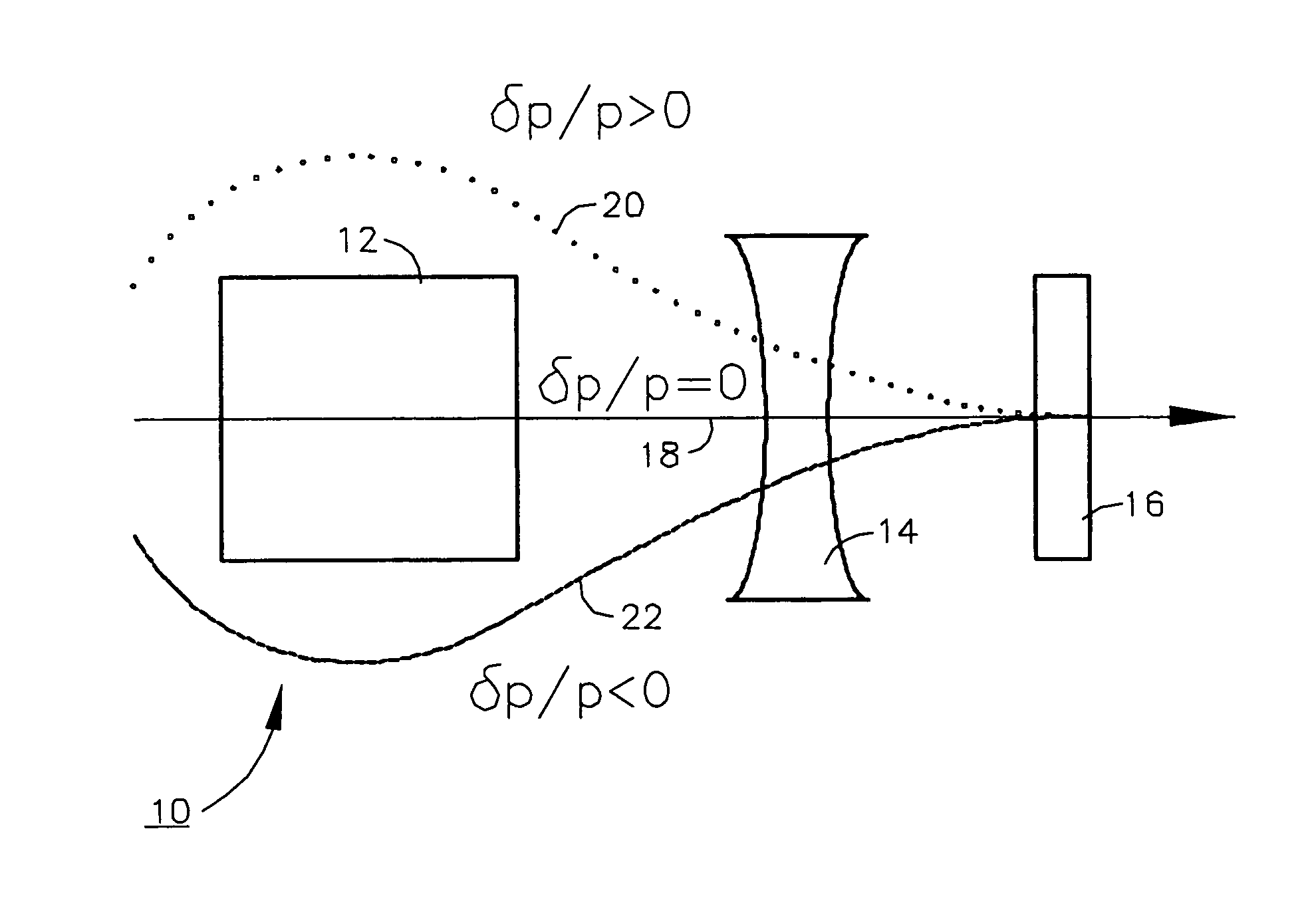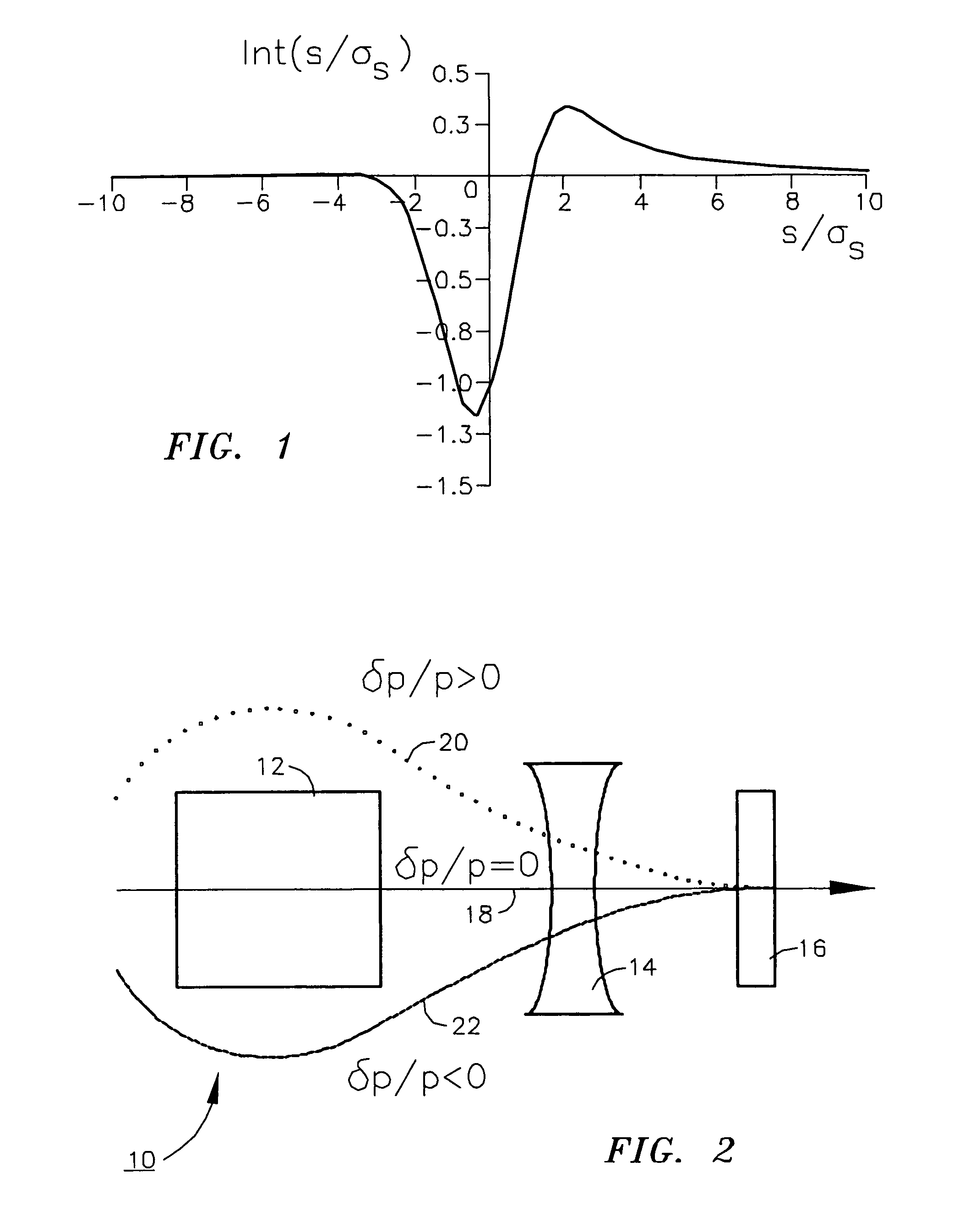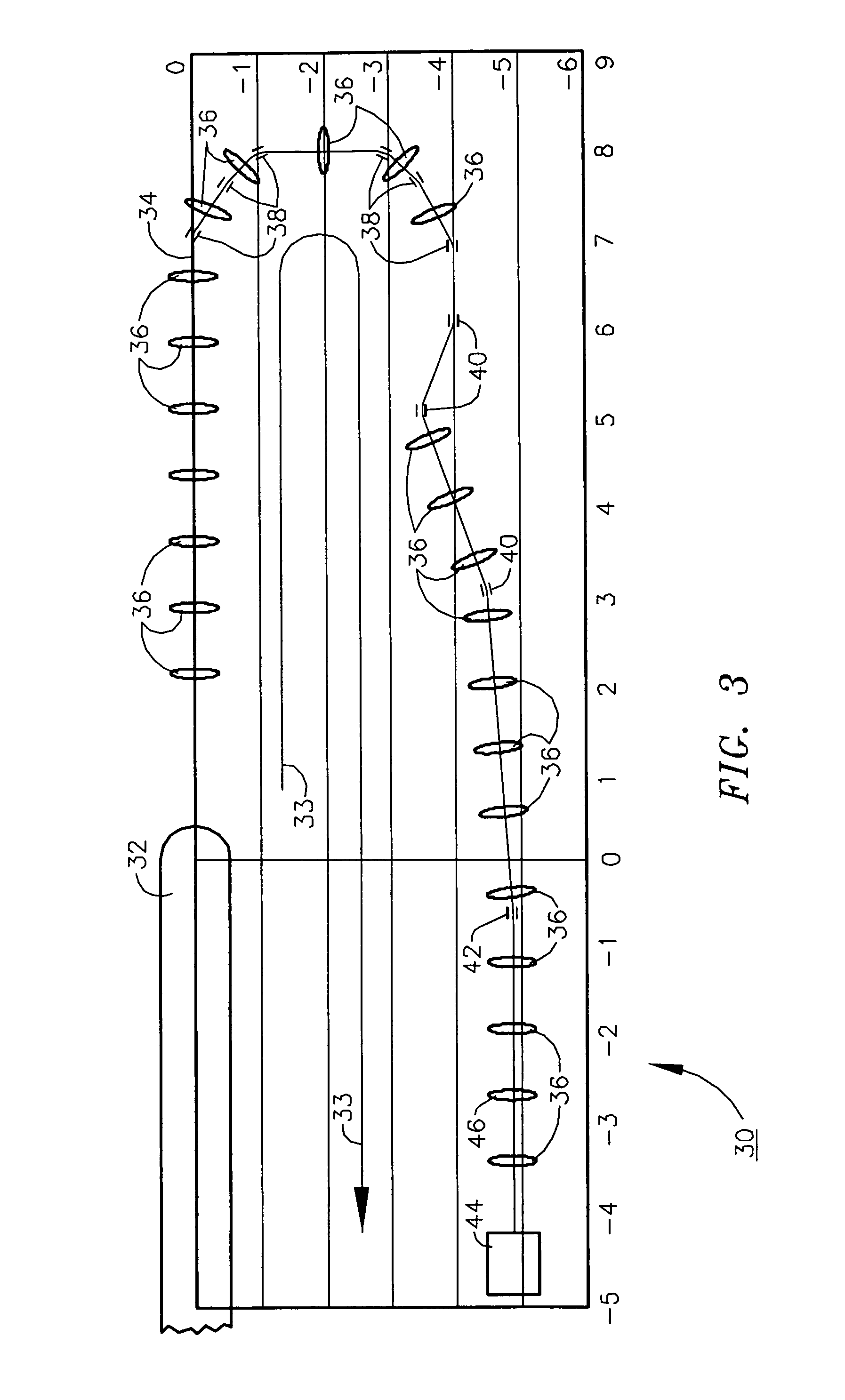Method of controlling coherent synchroton radiation-driven degradation of beam quality during bunch length compression
a beam quality and beam quality technology, applied in lasers, radiation, radiation therapy, etc., can solve the problems of beam quality degradation, prior art beam quality degradation has not been able to avoid this problem, and the beam quality is deteriorated
- Summary
- Abstract
- Description
- Claims
- Application Information
AI Technical Summary
Benefits of technology
Problems solved by technology
Method used
Image
Examples
Embodiment Construction
[0014]In this description, we assume a simple CSR model that has been detailed elsewhere (D. Douglas, “Suppression and Enhancement of CSR-Driven Emittance Degradation in the IR-FEL Driver”, JLAB-TN-98-012, 24 Mar. 1998). This description captures the fact that CSR causes a redistribution of energy in a bunch during bending, and as a consequence can significantly degrade emittance. In a bunch of length σz, charge / bunch Q, and energy E, an electron at position s will experience, while undergoing a bend of through angle Δθ at radius ρ, the following impulse in relative momentum δp / p given according to the wake function Int(s / σz) as shown in FIG. 1 and defined by the following formula.
[0015]δpp={18000Qρ1 / 3Δθ31 / 32πσs4 / 3E}Int(sσs)
[0016]This interaction has two consequences:[0017]1) energy is redistributed across the bunch, lowering the energy of the tail and raising that of the head and shifting the centroid due to radiative loss; and[0018]2) when the electron is suddenly di...
PUM
 Login to View More
Login to View More Abstract
Description
Claims
Application Information
 Login to View More
Login to View More - R&D
- Intellectual Property
- Life Sciences
- Materials
- Tech Scout
- Unparalleled Data Quality
- Higher Quality Content
- 60% Fewer Hallucinations
Browse by: Latest US Patents, China's latest patents, Technical Efficacy Thesaurus, Application Domain, Technology Topic, Popular Technical Reports.
© 2025 PatSnap. All rights reserved.Legal|Privacy policy|Modern Slavery Act Transparency Statement|Sitemap|About US| Contact US: help@patsnap.com



